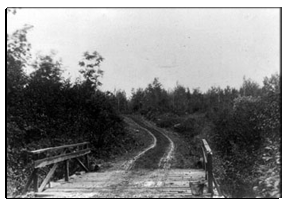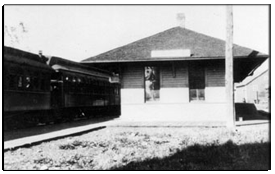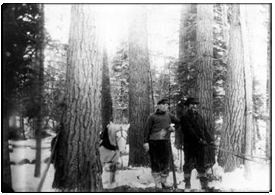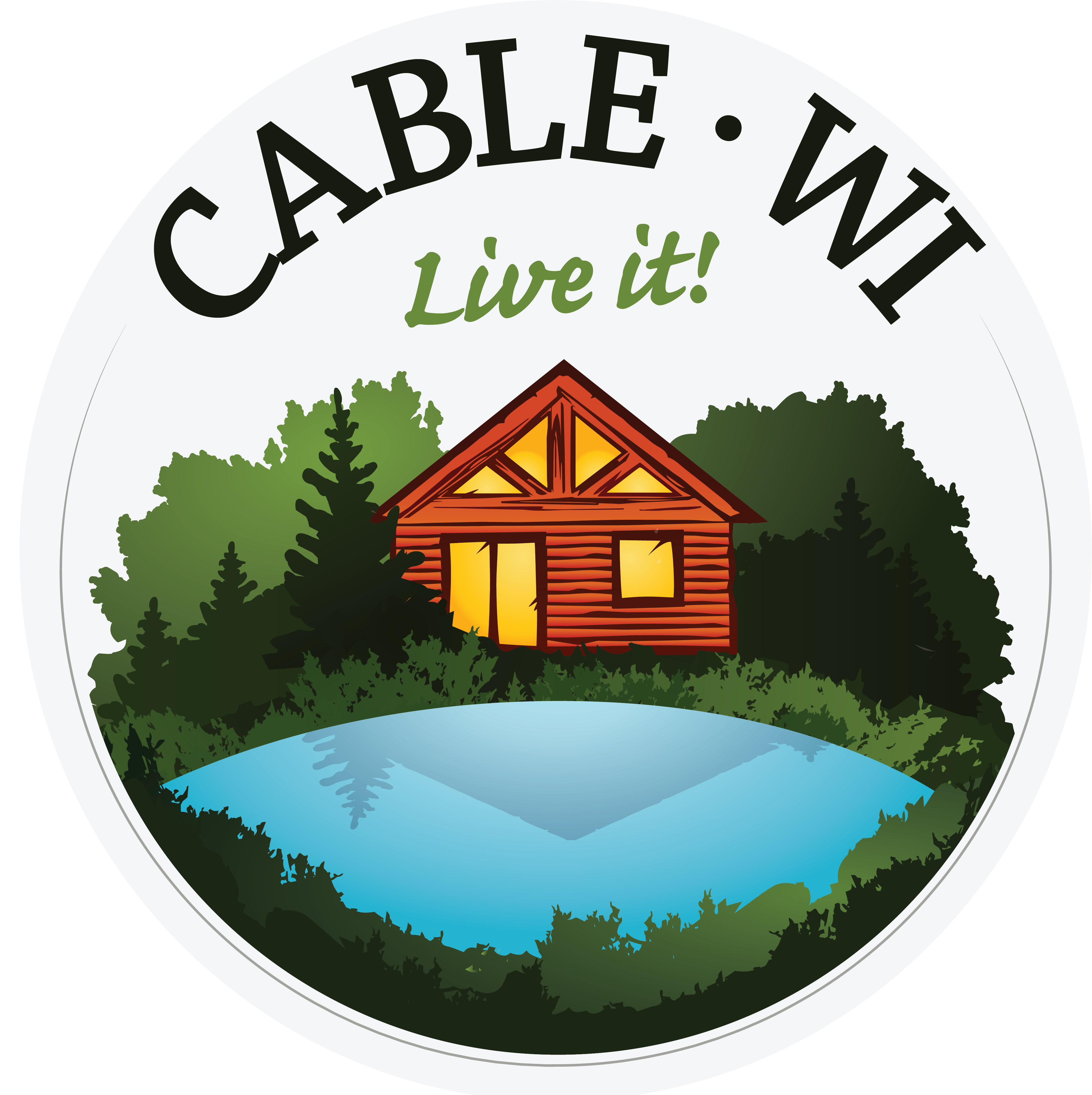Published in conjunction with Cable’s Centennial in 1980
 Long years ago, long before the first white explorer passed through this area, the succession of tribes who inhabited the northern forest took the “Turtle Portage,” from what is now known as Perry Lake to the Namakagon River. This portage connected the waterway beginning in the Chequamegon Bay to the St. Croix riverway and the Mississippi.
Long years ago, long before the first white explorer passed through this area, the succession of tribes who inhabited the northern forest took the “Turtle Portage,” from what is now known as Perry Lake to the Namakagon River. This portage connected the waterway beginning in the Chequamegon Bay to the St. Croix riverway and the Mississippi.
The first recorded mention of the Cable area comes from the journal of the French adventurer Pierre Raddison who traveled from Montreal to Chequamegon Bay and south to Lac Courte Oreilles in 1659. He said, “The country is beautiful, with very few mountains, the woods clear.” The Cable area fell into the area designated as the Northwest Territory by an 1836 Act of Congress.
The area was officially surveyed, a job completed in October of 1858, but it was not until the development of the railroads and the subsequent exploitation of the lumber resource in the latter half of the 19th Century that significant numbers of people moved into the area. The towns that sprang up to service the 500-700 man railroad crews tended to be hastily assembled and composed principally of saloons, lodging houses and “establishments not proper to be mentioned.” Such a town, in the beginning, was Cable.
 The last rail was laid on the last tie completing the railroad line to Cable on Nov. 23, 1880 and the station was named in honor of the President of the Chicago Rock Island Railroad, Ransom Reed Cable. Growth in the town of Cable was booming, until a May 1882 fire laid waste to most of it. The railroad crews had already moved on, the post office was destroyed, there was not much left of Cable. By 1883 only five families remained.
The last rail was laid on the last tie completing the railroad line to Cable on Nov. 23, 1880 and the station was named in honor of the President of the Chicago Rock Island Railroad, Ransom Reed Cable. Growth in the town of Cable was booming, until a May 1882 fire laid waste to most of it. The railroad crews had already moved on, the post office was destroyed, there was not much left of Cable. By 1883 only five families remained.
A lumbering boom around Lake Namakagon in the late 1880’s helped fuel the resurgence of Cable. The post office was reestablished, hotels, homes and stores replaced those lost to the fire and a school district was established and a school built in 1885. Many who lived in the area or worked in the lumber camps made or augmented their income by hunting, fishing or trapping. By the summer of 1891, Cable’s correspondent to the Hayward Journal News reported that “Cable’s not dead, Cable has come to stay, the mill is going, the town is growing, we have two stores and two hotels.”
 As the great stands of pine were removed the boom logging days drew to an end, although the industry continued as the remaining hardwood stands were cut and milled.
As the great stands of pine were removed the boom logging days drew to an end, although the industry continued as the remaining hardwood stands were cut and milled.
A new wave of settlers moved into Cable, many of them immigrants who had worked in the lumber camps and were now looking for land to farm or to develop for other opportunities. The tourism industry ascended as logging declined and it became clear this was not an optimal farming area. Hunting and fishing drew people to the area, as did the clean air and clean water.
- The Cable Congregational Church, now known as the Cable United Church of Christ became a congregation in 1901. Their first church was built around, and still contains, the original Cable schoolhouse building.
- St. Anne’s Church came into being in 1902. Their first church, though at their current location, was quite modest, with three pews on each side. The current building was dedicated in July of 1960.
- Trinity Lutheran had its beginnings in 1914, when a Lutheran pastor from Phipps traveled to Cable several times a month. Their original log cabin chapel, on current property, was dedicated in 1939.
- The Living Hope Church began as The Cable Missionary and Alliance church in 1934. Their first church was also a “re-purposed” schoolhouse. They have been in their present location on Hwy. 63 since 1975.
- The Brickhouse Café, back in 1905, was a combination home and real-estate office.
- The building that currently houses the Whispering Pines Gift & Gallery was erected in 1910 and did service as a rooming house, post office and office building. When Hank & Toni Vander-Ploeg acquired it in the early 1960’s it was a restaurant and beer bar. The adjacent Candle Cottage, also nearly 100 years old, did service as a bank, a liquor store, a gas station, a Rasmussen’s Plumbling location and as offices.
- Cable Lumber and Home was first opened as a retail outlet by the Rogan brothers in 1919 when the lumber boom had passed.
- The Forest Lodge Library was built in 1925. It looks, today, essentially as it did when built, with half-log shelving intact and custom furniture still in use.
- Tom Rondeau, Sr. first got into the grocery business in 1929 when he assumed management of Olson’s Grocery Store. He assumed ownership of the Frank Drummond store, on the current site of the Cable Visitor’s Center, in 1935. The Rondeau’s moved to their present location in 1965 and added “the hardware side” in the 1980’s.
- The Corner Bar, originally a grocery and confectionary store, became a licensed premises shortly after the end of Prohibition in 1933. (Cable had been “dry” since 1911!) The Evergreen also opened in this time period.
- Cable’s first bank opened in 1917 and folded in 1934. A branch of the State Bank of Drummond opened in the community in 1970 and has been at its current location, although not in its current building, since 1977.
- The very first phone line came to Cable in 1911, although service was not available to the village at large until 1922. The service was operated out of the Henry Fisk home. The Cable Telephone Company was incorporated in 1928 and operations were moved to the J. C. Richardson home, next to the library, in 1940. After purchasing many area phone companies and outgrowing all in-town locations and incarnations, what is now Norvado moved to their current location on Hwy 63 in 2003.
- The Stokes-Liebman American Legion and Auxiliary Post #487 first came into being (as Stokes) in the late 1920’s after the end of WWI. The Liebman was added after WWII and the Memorial Marker was placed at the Veteran’s Triangle in town was placed in 1961.
- Cable has been “electrified” since 1923, first utilizing a gas generator and then a steam plant, before a major utility made power available.
- There has been a Karow Barbershop in its current location since 1938.
- The building which houses The Ideal Market has been, variously, a grocery store, (twice, Olson’s and Angelow’s) a hardware store, twice, (Price’s and Rasmussen’s) car storage, a potato warehouse, a restaurant, an apartment building/retail complex and part of a “mini-mall” which included the two adjacent buildings; the current Post Office and the current King Realty, which have been, variously, restaurants, retail stores and a pharmacy.
- Telemark Lodge opened in 1947. The first American Birkebeiner ski race took place in 1973.
- The Cable Volunteer Fire Department was formed in 1955 and they purchased their first fire truck in that year.
- The Cable Lions got their start in 1965. They purchased the area’s first ambulance and financed the first year of liability insurance for the ambulance service.
- In 1970 Mary Griggs Burke financed the construction of the Cable Natural History Museum.
- The construction of the Cable Community Centre was also completed in 1970.
- The project was a collaboration between the Village of Cable Planning Committee and Mrs. John J. Louis.
